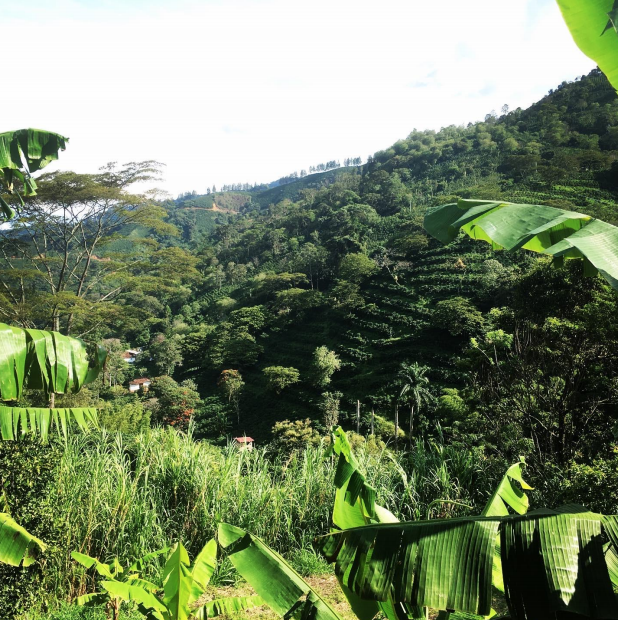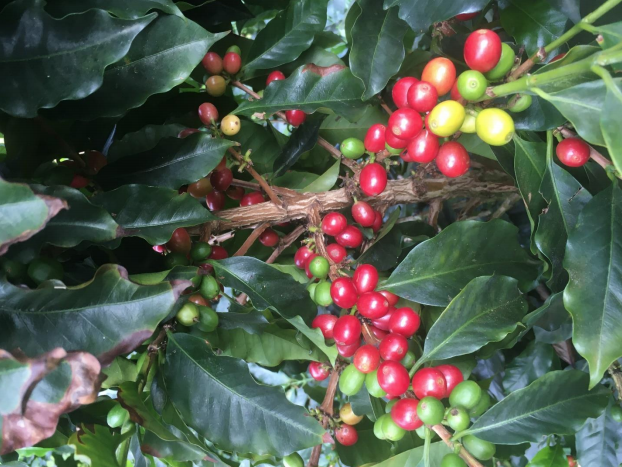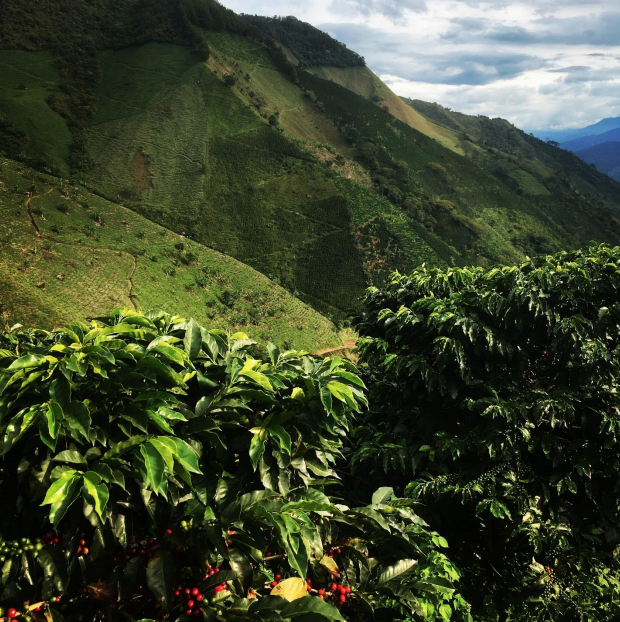
Good morning and happy Monday,
Fall is definitely among us here in the Northeast. Perfect time to come and visit.
The market broke out on good fund-based buying as the market broke through important 100 and 200 day moving averages. According to CFTC COT, funds bought at least 17.5K lots, not accounting for more done after Tuesday. The Brazilian Real was both helpful, and not depending on the day and the time of day, it’s been on a bit of a roller coaster recently. Good origin-based selling was noted throughout the rally. Shorter term systems should be done with their buying at this point, should be interesting to see if the market can hold on to these gains at this time.
Last week, our Joe Coniglio visited the interior of Colombia, visiting Antioquia specifically Ciudad Bolivar and surroundings, where he met some really interesting families fully invested in coffee farming in Colombia. He’ll share some pictures and comments from his visit there below. Then our John Randall joined him in Cartagena for the annual exporter’s association meeting – ASOEXPORT.
The meeting was unexpectedly upbeat considering the recent rally in the NY C market. With currently trading differentials the exporters were getting over the “magic” 1.40 level that FNC claims is needed for Colombian coffee farmers. FNC would love to set the price worldwide as the reference price for washed mild coffees. In a talk given by FNC officials, they expressed their dissatisfaction with tying the price of Colombian coffees to the C market.
In his opening remarks, the chair of ASOEXPORT claimed that Brazil and Vietnam are the only producers capable of making money at current pricing, and further stated “A market that only works for 2 works for no one”. While there are some good ideas, the market is still seeking risk remediation solutions.
The spokesman from ANALDEX stated that the trade wars are hurting world economic growth. Colombia GDP is expected to grow to 3.6 which would be the best in the region. He stated he felt Colombia needed to do more to grow internal consumption. Overall, Venezuelan migration is helping Colombia.
FNC continues to work with farmers on renovation program and were indeed proud of reaching the 20 bag/hectare level during this crop year. That is up from 13 bags/hectare in 2011. Colombia is the leader in fighting rust and pests. Colombia expects 14 million bag crops for 2020, 2021 and 2022.
The Colombian finance minister was equally proud of Colombia’s GDP growth, currently at 3.5% and said that Colombia was “bouncing back better than expected”, and were especially proud of addressing urban unemployment.
Our old friend, Ric Reinhardt was asked to give a speech on the future of Washed Arabica coffee, and he had some interesting points. First was the percentage of the overall market the top 5 largest producers are:
In 1991: 60%
In 2005: 65%
In 2019: 74%
He further stated:
This kind of consolidation in the market, would lead to more volatility as problems in any one of these top producers would be a larger problem to the market.
Coops in Brazil are the strongest in the world owing to their access to credit.
Brazils quality, which is still at 80% of original even after 2 years, allows it to be patient.
While washed milds have grown from 35-40 million bags in the past 30 years, their percentage of the total produced is way down.
Renovation saved Colombia. Look at countries like El Salvador who had a 4 million bag crop reduced to 350,000 bags largely owing to rust. In washed Arabica growing countries, lower altitude cultivation has been ravaged by this disease.
In unofficial and personal discussions, talk centered around the recent news that one very large Coop in Colombia had to declare bankruptcy. This Coop had investments from a few roasters around the world and the effects on traders and roasters is unclear at this time.
As always, we’re here to help where we can.
Please enjoy some pictures from our recent trip below!
Vista View from Finca Yarumal

Lovely Coffee Fruit

Vista View From Finca La Reserva

Vista View From Finca La Reserva

